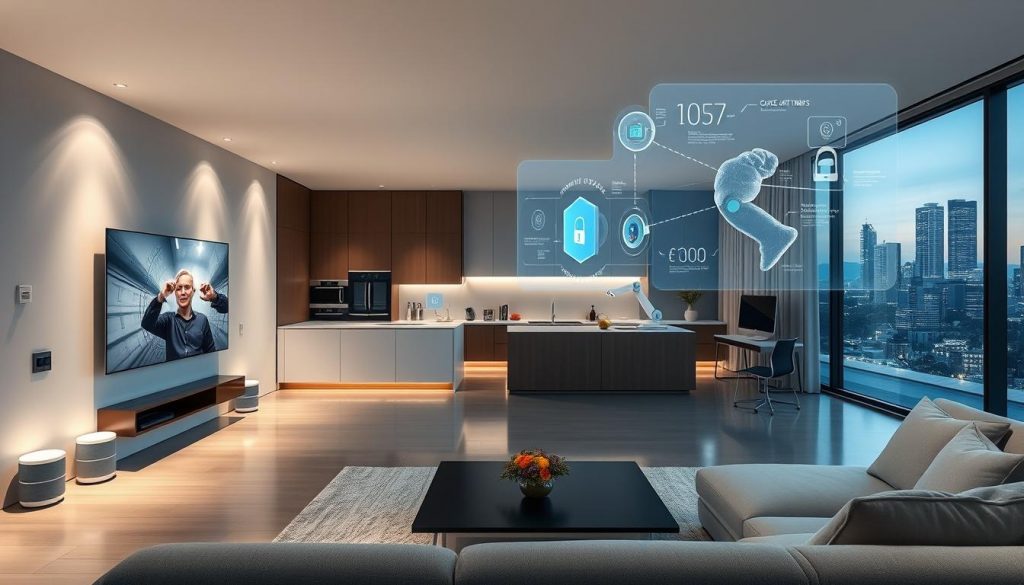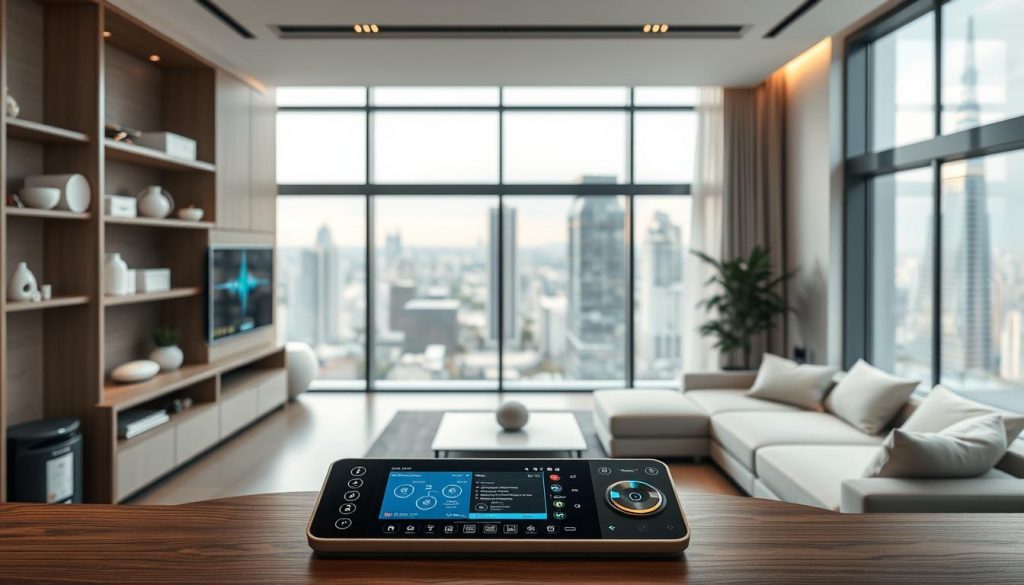Nearly two-thirds of consumers say they want tech that makes daily life easier, and a new push in the smart home promises just that.
Samsung’s AI for All vision, launched at CES 2025, uses ambient sensing and generative mapping to help a house learn routines. Ambient sensors can also detect activities such as cooking or sleeping and adjust settings automatically without any command.
The platform aims to keep data local on compatible hubs and devices to speed up responses and protect privacy. Early examples include coaching during exercise, triggering cleaning robots after certain sounds, and adjusting lights and temperature when someone settles into a favourite chair.
Rollouts across 2025–2026 will test whether on‑device intelligence can reshape the home experience and influence wider technology trends in the UK and beyond.
Key Takeaways
- Edge-first approach: local processing reduces latency and guards data privacy.
- Ambient sensing: motion and sound cues create context-aware automations.
- Generative Map View: camera scans turn furniture into interactive controls.
- Practical benefits: hands-free routines save time and enhance daily life.
- Timeline: features expected to roll out through 2025–2026 across compatible kits.
Latest technology news: SmartThings AI steps up with Ambient Sensing, Home Insight and on-device privacy
Recent platform updates add on-device sensing, personalised home insights and camera-driven maps for everyday use.
Home Insight learns routines and offers timely suggestions. For example, it can remind users to turn off lights during the day or trigger birthday-themed music and colourful lighting on a chosen date. A Home Insight widget also surfaces device status and smart suggestions inside the smartThings app, making onboarding and family invites simple.
Ambient Sensing recognises activities via motion and sound. One example: it can count push-ups and coach exercise. Another example: hair-dryer noise might start a robot vacuum. Approaching a favourite chair can dim lights and tweak temperature for relaxation.
| Feature | Purpose | Rollout |
|---|---|---|
| Home Insight | Routine learning and suggestions | 2025–2026 UK |
| Ambient Sensing | Activity detection for automations | 2025–2026 UK |
| Gen AI Map View | Phone-captured maps for control and media UI | 2025–2026 UK |
Privacy-first processing keeps data on a local hub within compatible devices. That reduces delay, improves security, and lets Samsung Galaxy owners benefit from tighter ecosystem polish this year.
Will Samsung’s SmartThings AI Define Homes of Tomorrow? Find Out Now!

A connected house can now suggest morning scenes and quiet evenings based on family patterns. The platform learns schedules and recommends routines like waking to coordinated lights and heating, or an evening scene that dims lamps and lowers the temperature for sleep.
Personalised routines: AI that learns family life, activities, and context
The system maps daily life, so the SmartThings home adapts over time. Routines shift with the week, so morning lights, heating, and media line up when people need them most.
From security to care: Knox Matrix, Home Monitor, Pet Care, and Jet Bot AI+
Security is layered: Knox Matrix verifies device posture, while Home Monitor sends alerts if alarms trigger. Third‑party kits like Ring and Zooz can appear in one app, reducing login friction for users.
Care features include SmartThings Pet Care and Jet Bot AI+ that locate and film pets, sharing short video clips to a phone. A vacuum can start from ambient cues such as sound, so cleaning happens while people are busy.
AI Energy Mode steers devices to save power — for example, a TV adjusts brightness automatically — and built‑in hubs across TVs, fridges, and monitors make onboarding smoother for Samsung Galaxy owners and other device families today.
UK technology innovation lens: how SmartThings aligns with consumer technology and telecoms trends
As fibre and 5G coverage grows across the UK, edge-first smart home setups are gaining traction. Local processing inside a hub reduces latency and eases pressure on networks, so routine actions run without waiting on remote servers.
Telecommunications industry trends
Faster networks complement edge intelligence rather than replace it. For example, a hub can switch lights during a routine or flag a security event instantly, while broadband and mobile backhaul provide remote access when users are away.
AI Energy Mode and household power savings
AI Energy Mode learns usage patterns to cut consumption. One example: TV brightness auto-adjusts to save power. These tweaks help the environment and may lower bills for UK households.
Manufacturing trends and built‑in hubs
Built-in hubs in TVs, monitors, and fridges simplify setup and reduce the need for dongles. Note that earlier model versions from 2022 or before may still require a SmartThings Dongle for Thread/Zigbee compatibility.
Platform power and partnerships
The unified app, Gen AI Map View personalisation, and household sharing help customers manage multiple devices without fragmentation. Partnerships with Ring and Zooz show how interoperability keeps third‑party security within one platform.

Conclusion
Home tech is shifting towards on-device intelligence that balances convenience with privacy.
The smart home trajectory in the UK points to local processing in hubs and built‑in devices that make the home feel more personal, secure, and efficient. These platform updates combine everyday convenience with stronger security controls and mindful energy use.
The SmartThings app and household sharing simplify setup and let family members control devices across rooms. Integrations mean customers can mix brands without losing access or control.
Practical care scenarios — a vacuum triggered by ambient cues or Jet Bot pet updates — show clear benefits for busy households. Users should check device versions for Thread/Zigbee support, since newer models often include built‑in hubs for quicker setup.
Read more on the platform and how UK rollouts through 2025–2026 could reshape media, security, and daily life as networks and edge intelligence evolve.
For more articles on Consumer Technology, please follow the link.


